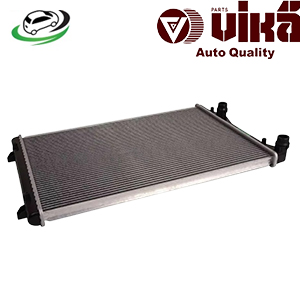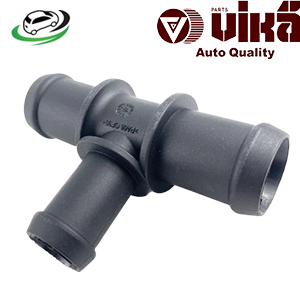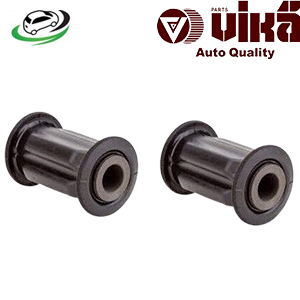-20%
Get Volkswagen Touareg 3 V6 TDI Steering rack bushing 2H0422405
The steering rack bushing is a crucial component in a vehicle’s steering system. It plays a vital role in the overall performance and responsiveness of the steering mechanism. Understanding the functions, importance, maintenance practices, and common issues associated with steering rack bushings is essential for vehicle owners and automotive professionals alike.
Functions of the Steering Rack Bushing
- Support and Alignment: The primary function of the steering rack bushing is to support and align the steering rack within the vehicle’s chassis. It ensures that the steering rack remains securely in place while allowing for controlled movement as the driver turns the steering wheel.
- Vibration Damping: The bushing acts as a vibration damper, absorbing shocks and vibrations generated during driving. By minimizing the transfer of road noise and vibrations to the steering wheel, the bushing contributes to a smoother and more comfortable driving experience.
- Reducing Friction: Steering rack bushings help reduce friction between the steering rack and the vehicle chassis. This reduction in friction enhances steering responsiveness and allows for smoother steering movements.
- Compensating for Wear: As the steering components wear over time, the bushings provide a level of compensation for misalignment or play in the system. This compensation helps maintain proper steering feel and control.
- Enhancing Steering Precision: By providing support and minimizing movement in the steering rack, the bushings help maintain steering precision. This precision is crucial for effective handling and maneuverability, especially at higher speeds.
Importance of the Steering Rack Bushing
- Steering Control: The steering rack bushing is essential for maintaining proper steering control. A worn or damaged bushing can lead to play or looseness in the steering system, making the vehicle difficult to control and potentially dangerous.
- Safety: A functioning steering rack bushing is vital for safe driving. If the bushing fails, it can lead to steering instability, resulting in compromised handling and increased risk of accidents. Ensuring that the bushing is in good condition is crucial for overall vehicle safety.
- Driving Comfort: The vibration-damping properties of the steering rack bushing contribute to a more comfortable driving experience. By absorbing shocks and vibrations, the bushing reduces driver fatigue and enhances overall ride quality.
- Cost-Effectiveness: Regular maintenance and timely replacement of worn steering rack bushings can prevent more extensive damage to the steering system. Addressing issues with the bushing early can save vehicle owners from costly repairs related to steering component failures.
- Enhancing Vehicle Performance: Properly functioning steering rack bushings contribute to better vehicle performance. By maintaining steering precision and responsiveness, the bushings help ensure that the vehicle handles well in various driving conditions.
Materials Used for Steering Rack Bushings
- Rubber: Most steering rack bushings are made of rubber due to its flexibility and vibration-damping properties. Rubber bushings provide a balance between comfort and performance, allowing for some movement while still supporting the steering rack.
- Polyurethane: Polyurethane bushings are a popular aftermarket upgrade for performance applications. They offer improved durability and resistance to wear compared to standard rubber bushings. However, they can transmit more road noise and vibrations, which may affect driving comfort.
- Nylon or Plastic: In some cases, nylon or plastic bushings may be used. These materials are lightweight and can provide lower friction, but they may not offer the same level of vibration dampening as rubber or polyurethane.
Maintenance of the Steering Rack Bushing
- Regular Inspections: Routine inspections of the steering system should include checking the condition of the steering rack bushings. Look for signs of wear, such as cracks, tears, or excessive play in the bushing.
- Check for Steering Play: If you notice increased play in the steering wheel or a vague steering feel, it may indicate worn bushings. Testing for steering play should be part of regular vehicle maintenance.
- Monitor Alignment: Misalignment can put additional stress on the steering rack bushings. Regular wheel alignments and ensuring that the suspension components are in good condition can help prolong the life of the bushings.
- Replace Worn Bushings: If bushings are found to be worn or damaged during inspections, they should be replaced promptly. Ignoring worn bushings can lead to further deterioration of the steering system and potential safety issues.
- Lubrication: While bushings are often designed to be self-lubricating, adding lubricant to the bushings can help reduce friction and extend their lifespan. However, it’s essential to use the appropriate lubricant recommended by the manufacturer.
- Environmental Considerations: Protect the steering rack bushings from exposure to harsh chemicals, oils, and extreme temperatures. Keeping the bushings clean and free from contaminants can help prevent premature wear.
Common Issues Associated with Steering Rack Bushings
- Wear and Tear: Over time, steering rack bushings can wear out due to exposure to heat, moisture, and road contaminants. Worn bushings may lead to increased play in the steering system, resulting in poor handling and response.
- Cracking or Breaking: Rubber bushings can crack or break due to age, temperature fluctuations, or excessive stress. Cracked bushings can lead to steering instability and should be replaced immediately.
- Noise: A failing steering rack bushing can produce noise, such as clunking or popping sounds when turning the steering wheel. These noises may indicate that the bushing is worn and needs replacement.
- Vibration Issues: If the steering wheel vibrates excessively, it may be a sign of worn bushings. The bushings’ inability to dampen vibrations can result in a rough driving experience.
- Steering Sensitivity Changes: If you notice a change in the sensitivity or responsiveness of the steering, it could be attributed to worn or damaged bushings. A lack of precision in steering can make driving more challenging and less safe.
- Increased Steering Effort: Worn bushings can cause increased steering effort, making it harder to turn the wheel. If steering feels heavy or difficult, it may indicate that the bushings need attention.
Conclusion
The steering rack bushing is a vital component of a vehicle’s steering system, providing support, alignment, and vibration damping for the steering rack. Its functions are crucial for maintaining steering control, driving comfort, and overall vehicle performance.
Regular maintenance and inspections of the steering rack bushing can help prevent common issues and ensure safe driving. By understanding the importance of this component and addressing wear and damage promptly, vehicle owners can enhance their steering system’s performance and extend its lifespan.
Ultimately, investing time in the maintenance of steering rack bushings is essential for achieving a smooth, responsive, and safe driving experience. By staying proactive and vigilant about the condition of these components, drivers can enjoy reliable performance from their vehicles for many years to come.
Follow us on Facebook for more parts.




Reviews
Clear filtersThere are no reviews yet.